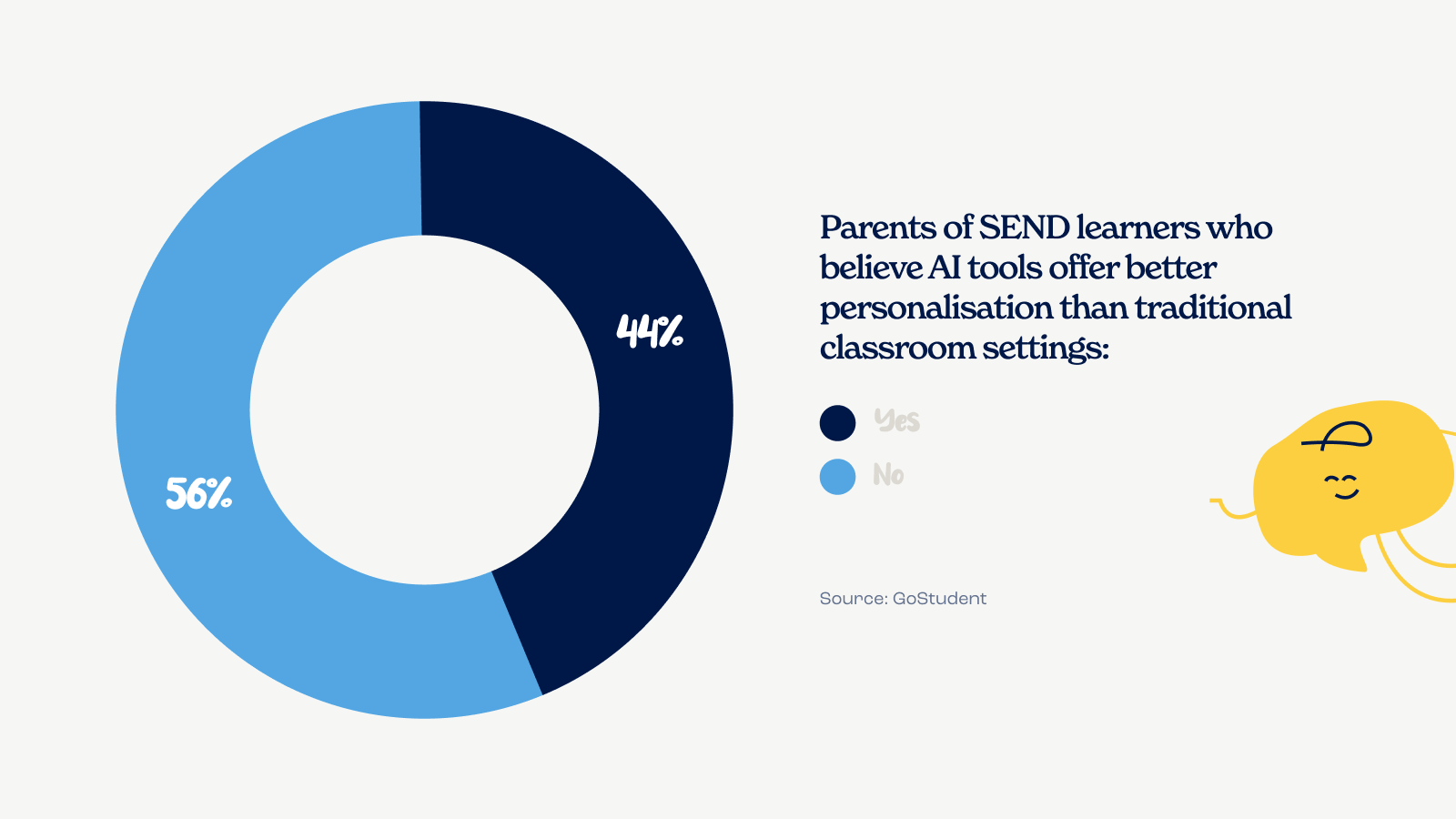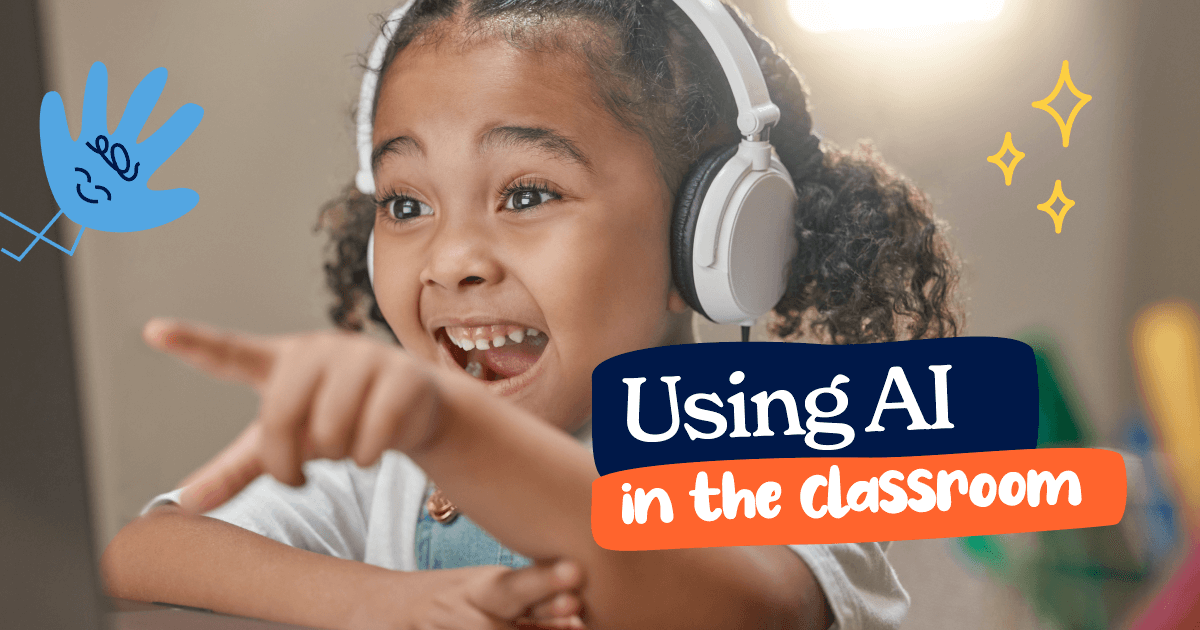Why AI in Education Is Booming
Artificial Intelligence (AI) is becoming a central force in education, from helping teachers reduce their workload to supporting students with revision and writing. Its reach has expanded far beyond experimental edtech tools - AI is now used in lesson planning platforms, assessment software, classroom chatbots, and homework apps.
However, as AI becomes more embedded in learning environments, it raises an important question: how do we use it responsibly? And what does ethical AI in schools actually look like?
This article explores how teachers and students can adopt AI in ways that enhance learning rather than replace thinking, providing strategies, real-world tools, and cautionary advice on ethical implementation.
AI in Primary & Secondary Schools: The Foundations
In schools, particularly at the primary and lower secondary levels, the use of AI is still in its early stages but growing fast. Here, the focus is typically on teacher-led AI use - tools that help generate differentiated lesson materials, reduce planning time, or scaffold SEND/EAL learners. AI is often implemented via classroom platforms like Google Workspace, Microsoft Teams for Education, or dedicated tools like MagicSchool and Eduaide.ai.
At this stage, ethical guidance is crucial. Students may engage with AI through chatbots or revision tools, but usually under supervision. Younger pupils lack the digital maturity to use AI independently, making teacher modelling and parental guidance essential. Schools adopting AI often embed it into their digital literacy or computing curriculum, with an emphasis on responsible use, understanding biases, and AI as a support, not a shortcut.
The UK Department for Education recommends that schools introduce students to the concept of generative AI gradually, focusing on curiosity and awareness rather than technical mastery. The goal is not to make every child an AI expert, but to help them think critically about its role in their learning and society.
AI in Colleges (Post-16): Personalisation and Independence
In further education colleges and sixth forms, AI adoption typically expands to include student-led use. Learners aged 16–19 are more digitally fluent and often use AI independently for revision, coursework support, or research. Here, the emphasis shifts toward building autonomy, but also instilling academic integrity.
Students may use tools like Grammarly, ChatGPT, Socratic, or Notion AI to help structure essays, revise subject content, or improve the presentation of assignments. Colleges must balance access with clear policies: what is acceptable use (e.g. grammar correction) and what constitutes misuse (e.g. submitting AI-written content unedited).
This is also the stage where career and vocational AI tools enter the picture. Students in business, health, or design pathways may use AI for project planning, prototyping, or data interpretation—mirroring real-world workplace applications. Colleges have a role in preparing learners for AI-enabled jobs, meaning staff training and cross-departmental collaboration are vital.
Crucially, AI in post-16 education should support metacognitive skills, helping students understand how they learn, not just what they learn. By encouraging students to reflect on how AI supports (or distracts from) their learning process, colleges can promote critical thinking and digital self-regulation.
AI in Higher Education: Research, Ethics & Employability
At university level, AI is no longer just a support tool—it’s part of the academic and research landscape. Students are expected to use AI independently and responsibly, particularly in disciplines like computer science, law, medicine, and business, where real-world applications are constantly evolving.
Many universities, like The University of Oxford, have already released formal guidance on AI use. For example, University College London and the University of Cambridge have published public frameworks that distinguish between appropriate support (e.g. using AI to plan an essay structure) and academic misconduct (e.g. submitting full AI-written essays).

In higher education, the stakes are higher. Students are preparing for professional and academic careers where the misuse of AI can have serious consequences. Institutions therefore invest in teaching AI ethics, algorithmic bias, data privacy, and AI auditing, not only to prevent abuse, but to develop future leaders in AI-literate sectors.
AI is also increasingly part of student life. From AI‑driven mental health chatbots to timetabling apps and digital research assistants, universities are integrating AI into administrative systems and pastoral support too.
The overarching goal at this level is to equip students with AI fluency - not just how to use the tools, but how to question, critique, and build with them. Universities are where students become not only responsible users of AI, but potential creators of it.
👩🏫 How to Use AI in Teaching
Contrary to popular opinion, AI can support teachers without replacing them! In the near future, teaching professions are safe, but AI can significantly enhance teaching and learning experiences.
Smarter Lesson Planning & Resource Creation 📝
For teachers, one of the most time-consuming tasks is planning high-quality lessons and creating differentiated resources. AI tools like MagicSchool and Eduaide.ai allow educators to generate structured lesson plans, discussion questions, activities, and assessments tailored to age group, ability level, and subject.
For example, a science teacher can input: “Create a Year 5 lesson on the water cycle including visual resources, hands-on activities, and a homework task.”
In seconds, they receive a framework they can adapt and personalise. This doesn’t mean the teacher is replaced - it means they start with a solid foundation and build upon it using their professional insight.
Reducing Teacher Workload Through AI-Assisted Feedback ✅
Feedback is essential to student progress, but it can quickly become overwhelming. AI can support the marking process by suggesting starter feedback comments or highlighting potential areas for review. While AI is not suitable for grading subjective essays or creative work on its own, it can provide draft feedback that the teacher can refine.
For example, Microsoft’s Copilot or Google’s AI features can generate personalised report card comments based on prior feedback or pupil data, reducing administrative time without compromising quality.
A DfE education piece noted that AI has the potential to reduce teacher workload significantly, with some pilot schemes suggesting up to 20% time saving when used alongside professional judgement.
Supporting Differentiation & Inclusive Learning 🙋♀️
AI’s ability to personalise learning materials is particularly powerful in classrooms with varied needs. Rather than creating separate worksheets from scratch, teachers can use AI to produce tiered tasks:
- Simplified versions for EAL or lower-ability students
- Core versions for general class use
- Extension tasks for high-attaining pupils
This level of differentiation through AI learning support helps all learners access content at the right challenge level, and reduces the pressure on teachers to manually create multiple versions.
Using AI to Support SEND Students 📚
Artificial Intelligence can be a game-changer for learners with Special Educational Needs and Disabilities (SEND).
These students often require additional support, differentiated materials, and a slower or more interactive pace of learning. AI’s flexibility allows it to provide immediate, tailored assistance that adapts to each learner’s individual needs, something even the most experienced teachers can struggle to offer consistently in a full classroom setting.
AI can be especially beneficial for students with dyslexia, ADHD, autism, or processing delays. For instance, a student with dyslexia might benefit from a text-to-speech tool that reads passages aloud while visually highlighting words. This dual-mode input strengthens decoding and comprehension simultaneously. Similarly, students with ADHD could benefit from AI-driven micro-activities that help break tasks into smaller steps, keeping focus high and reducing the cognitive load of large assignments.
Students who struggle with working memory can use AI to prompt them with cues, questions, or mini-recaps throughout a task. For example, an AI system could provide embedded prompts like “What do you think might happen next?” during reading, which helps maintain attention and comprehension.
A 2024 report by GoStudent revealed that 44% of parents of SEND learners believe AI tools offer better personalisation than traditional classroom settings. Yet the same report noted that only 31% of UK students have received any formal education about how to use AI - a gap that disproportionately affects those who would benefit most from structured use.

To use AI meaningfully in a SEND context, adult guidance is essential.
Teachers, support staff, and parents must model its appropriate use and monitor outputs carefully. AI should never replace targeted interventions or relationship-based support but can become a powerful tool to supplement them. For example, progress tracking within AI systems can help inform Individual Education Plans (IEPs), offering teachers new insights into where learners struggle most and how they respond to different formats.
In short, AI has the potential to radically increase access for SEND learners, but only when it is implemented thoughtfully, with equity, ethical considerations and strong human oversight.
Using AI to Support EAL and ESL Students 🌍
For learners who speak English as an Additional Language (EAL) or English as a Second Language (ESL), school can often be daunting. Here, the impact of AI can be profound, both on their language development and cultural awareness.
Beyond the challenge of navigating curriculum content, they must also decode unfamiliar grammar, idioms, and academic phrasing. AI offers a quiet, consistent support system that can help break down language barriers in real-time.
What makes AI particularly suited to supporting EAL/ESL students is its responsiveness. A learner can input an unfamiliar sentence and immediately receive a simplified version or alternative explanation. For example, if a student reads “She was on the verge of tears,” they can ask AI to explain the phrase and receive: “She was almost crying.” Over time, this builds vocabulary depth and confidence. By integrating AI, students learn at pace and close the gaps with their native peers.
AI can also support writing development. An ESL learner may write a draft and ask the AI for feedback on grammar, vocabulary variation, or sentence structure. Instead of waiting for teacher feedback, they receive instant suggestions that they can learn from and apply to future tasks. While this doesn’t replace classroom instruction, it provides a much-needed boost in independence and self-correction.
Speaking and listening skills can also be improved through conversational AI tools that simulate real-world dialogue. Tools like ChatGPT or voice-enabled language models can role-play a shopping trip or help practice how to ask for directions—providing a low-pressure space for repetition and fluency building.
However, as with SEND support, the benefits of AI for EAL/ESL learners depend on how it’s introduced. Teachers should review outputs to ensure phrasing is natural and idiomatic, as AI can sometimes produce technically correct but culturally awkward language. Students should also be encouraged to compare AI suggestions with their own writing and think critically about which option sounds best.
Importantly, AI should never replace real communication. Discussion, debate, and collaborative group work remain vital for language acquisition. But when used as a scaffold (not a substitute) AI can be an empowering tool for students working to build fluency and academic English skills, progressing learning outcomes.
Streamlining Admin Without Losing Control
Beyond planning and marking, AI can help with everyday tasks like writing emails to parents, summarising meeting notes, or creating visual schedules for SEN pupils. These automations free up time for face-to-face teaching and pastoral care.
According to GoStudent, 46% of UK parents hope artificial intelligence will reduce admin and free up teachers to focus on students - the parts of teaching that matter most!
👩🎓 How Students Are Using AI to Learn Better (and When It Crosses the Line)
Homework Help Without the Shortcuts
Students are increasingly using AI tools like ChatGPT and Grok to understand homework tasks or tricky concepts. When used correctly, these tools act as virtual tutors, guiding learners to find their own solutions.
But the temptation to copy and paste remains. That’s why schools must focus not only on access to AI—but education about it.
According to Little Lives UK, 59% of UK children aged 7–17 have used generative AI tools, but only 23% say they understand how they work or how to use them responsibly.
Students need to be taught that AI technologies are support tools; not a shortcut.
Building Writing Confidence
For many students, especially those with dyslexia or English as an additional language, writing tasks can be intimidating. AI can help by offering sentence starters, rewording suggestions, or grammar corrections in real time.
For example:
- A student writing an essay introduction could ask, “What’s a good opening line about climate change?”
- A struggling writer might use AI to rephrase: “I go park every day” → “I go to the park every day.”
Used this way, AI doesn’t remove the need for effort—it scaffolds it, helping students to reflect and improve their own work.
Active Revision Made Easy
It’s not just about using AI in the classroom, EdTech extends to home environments, with use cases supporting homework and revision. Instead of passively re-reading notes, students can use AI to:
- Generate flashcards
- Create quiz questions from their revision material
- Summarise long texts into digestible bullet points
These activities promote active recall, which research shows is one of the most effective methods for long-term memory retention.

Common Risks and How to Avoid Them
While AI has clear benefits, it also brings risks that educators, students, and parents must actively manage.
🚨Plagiarism and Lack of Originality
One of the most discussed issues is students using AI to complete whole assignments. This undermines learning and creates ethical concerns. Schools must establish clear rules and discuss with students the importance of declaring AI use where relevant.
Model language might include:
- “I used AI to help me reword some sentences.”
- “I asked an AI tool to generate practice questions and used them to revise.”
❌ Inaccurate or Biased Information
AI can present answers with confidence—even when they’re wrong. Students and teachers should always check AI-generated content against reliable sources and never assume it’s correct by default.
A study by Stanford University in 2023 found that large language models gave factually incorrect responses 27% of the time, especially in historical or ethical topics.
🤖 Over-Reliance on Technology
Perhaps the most subtle risk is that students begin to believe learning only happens with AI. Independent thinking, problem solving, and resilience are still essential life skills. Teachers should encourage students to view AI as a companion—not a crutch.
Best Practices for Ethical AI Use in Schools
To fully benefit from AI while protecting learning integrity, schools and families should follow these best practices:
1. Teach AI Literacy in the Curriculum
Students should understand:
- What AI is and how it works
- Where it gets its information from
- What it can and can’t do
Embedding these lessons into digital citizenship or PSHE programmes helps students make informed decisions about how they use AI.
2. Create Clear School Policies
Define when and how AI can be used in:
- Homework
- Essays and coursework
- Exams and assessments
Outline consequences for misuse, and expectations around citing AI assistance.
3. Provide CPD for Teachers
Educators need structured training to:
- Explore subject-specific AI tools
- Learn how to spot AI-generated work
- Share strategies for responsible classroom integration
This is especially important for early career teachers or those unfamiliar with the latest technology.
4. Balance AI Use with Human Connection
AI can enhance learning, but it can’t replace the emotional and social support that schools provide. Class discussion, group projects, and peer feedback should remain central.
A Human-Centred Future with AI in Education
AI has the power to unlock new possibilities in education—but only when guided by strong ethics and sound pedagogy. It should never replace teachers, but it can help them do their jobs better. It should never do the thinking for students, but it can help them develop better thinking habits.
Used wisely, AI will be remembered not for replacing schools—but for helping make them more inclusive, creative, and effective.
FAQs
What is the best AI tool for teachers right now?
Platforms like MagicSchool and Eduaide.ai are built specifically for educators and offer tools for lesson planning, resource creation, and marking support.
Can students use AI to help with homework?
Yes—when used ethically. AI can help explain concepts or suggest examples, but students should avoid copying AI-generated answers and always cite where it was used.
How do schools check for AI-generated work?
Many now use AI detection tools such as Turnitin’s AI checker or GPTZero. However, these are not always 100% accurate and must be used alongside teacher judgement.
Is AI safe for primary school students?
With adult guidance and appropriate tools, yes. AI can support early learners with reading comprehension, vocabulary, and creative writing. Safety and supervision are key.
Should schools teach AI as part of the curriculum?
Absolutely. As AI becomes more embedded in work and life, students need to understand not just how to use it—but how it works and what it means to use it responsibly.









.jpg)






